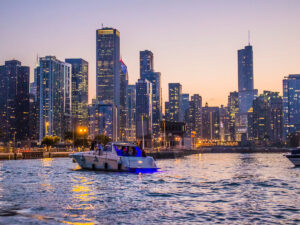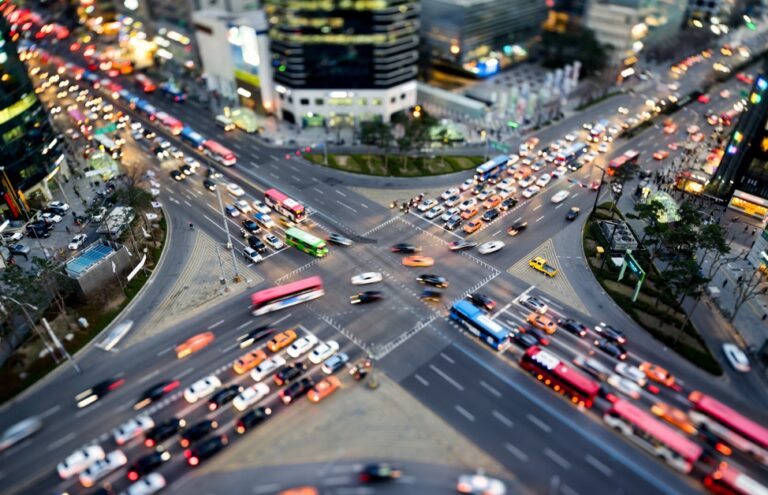By 2050, 68% of the world population is projected to live in urban areas. Urban development is attractive to many rural citizens for the many opportunities it creates in bettering their quality of life. However, many elements of urbanization can turn burdensome for a city and its citizens if it is not planned for carefully.
This is especially apparent when it comes to urban mobility concerns related to public transportation systems, modern transportation needs (like EV charging and electric scooters), micro mobility solutions, parking management solutions, and more.
If a city is to accept urbanization and its rapid growth of population, they will need to know what works, what doesn’t, and how to solve the negative effects of urbanization quickly to survive.
As the world’s population is increasing, a rising number of people are moving from rural areas to more urban settings in developed and developing countries. This global phenomenon is called urbanization — essentially decreasing the population of rural areas (an area with 2500 residents or fewer), and turning them into urban populations (a central city, and surrounding areas, with a population exceeding 50,000 people). More than half of the world’s population now lives in urban areas, and this shift in population is driven by a variety of factors.
Urbanization & Mobility Management
When looking at how parking asset managers deal with urbanization, there are a few key considerations:
- Drivers of urbanization: The factors that are driving people to move to urban areas, which urban areas they are choosing, and the benefits of urban lifestyles.
- The current effects of urbanizations on parking: With more people coming into cities, utilizing mobile devices, and enjoying a greater selection of products and services, urbanization is creating stronger parking preferences and more digital influence (reservations, payments, reviews, and more).
- Future impacts of urbanization on mobility: More people in cities also means more traffic, congestion, and emissions. Cities are responding now to create a better future where autonomous and electric vehicles can thrive. For parking assets, this means services like EV charging are critical.
Causes of Urbanization
Economic, political, and social issues merge with circumstances of modernization to make people want to migrate from rural to urban areas. Causes of urbanization include:
- Industrial Growth: The explosion of industrialization and manufacturing enterprises within a certain urban area gives rise to more employment opportunities — which is another factor of urbanization.
- Employment: Rural areas commonly are agricultural. Urbanization and industrial growth create opportunities for jobs that pay more, are more diverse, and may be less physically demanding.
- Social Factors: Many urban areas allow for better living standards, including superior educational facilities, better access to healthcare, modern housing, and more recreational activities.
- Economic Problems: Many people may choose to migrate from a world area, as it is generally not as economically stable or wealthy as a booming urban city.
- Political Turmoil: War, civil unrest, and other sources of political disorder often are woes of developing areas. This turbulence — and potential danger — can be enough to make anyone want to move.
- Modernization: New technology upgrades the infrastructure of urban areas. Better communication, medical facilities, and various social amenities can attract those from rural areas, leading to rapid urbanization.
Urbanization is a complex process, as many of its driving factors play into and give rise to one another. Once a rural city becomes urbanized, it may begin to thrive from several beneficial features — most of which are what attracts more people to them.
Effects of Urbanization: The Positive
Especially for those coming from rural areas, urban areas can create an overall better quality of life in several ways. When urban areas become bustling cities and towns, they become a society of culture that can facilitate financial and educational growth.

Employment Opportunities
With industrialization comes the creation of jobs. Usually making a shift from an agricultural economy, industrialization paves the way for modern industries and will need more people to perform various jobs. Rural jobs such as farming and mining may be labor-intensive (that is, if they have not been taken over by machines or automatic devices), while urban employment opportunities — such as healthcare, business, and education — will need a considerable amount of people with a variety of skills to fill many jobs.
Modernization
Modern technology driven by the right information provides for a better city infrastructure. With modernization of the urban environment, cities can adapt to cultural needs and provide support systems for future development. Additionally, modernization can make for a more sustainable city layout, with better housing/businesses, market centers, and public transit systems. For example, in advanced cities, mobile technology can assist large businesses in advanced mobility hubs for vehicles — significantly reducing the amount of traffic in growing cities.
The very presence of the Internet and IoT technology can expand communication to nearly any corner of the globe, and has the capability to efficiently run utilities and lighting for a whole city. These are just a few illustrations of how technology and modernization can provide efficient solutions to many facets of life, facilitating a better standard of living.
Access
Industrialization coupled with modernization brings an ample amount of access for a city and the citizens within it. Accessibility to the Internet, better healthcare, education, recreational activities, social services, and more all improve livability. Additionally, modern cities have the potential to better plan their city for sustainability and boost their economy.
Problems of Urbanization
In theory, urbanization is a brilliant concept. However, urbanized cities are running into major problems as a result of a rapidly growing population. Many urban cities have seen a population explosion that can be hard to plan for. As a result, employment opportunities may dry up quicker than expected — leading to unemployment. Additionally, housing problems may arise with a very high population density and can lead to poor housing conditions. These housing conditions are only exacerbated by unemployment issues. Unemployment and poor housing (or, the unattainability of adequate housing) is creating an influx of crime in urban cities as well. As it stands today, urbanization has several major drawbacks.
Congestion
With so many people moving from rural areas, many urbanized cities are starting to see an overcrowding issue. Major cities such as New York and Hong Kong are dealing with major congestion problems. Overpopulation is contributing to extreme traffic, the depletion of resources, pollution, and unemployment among many other issues.
This presents a range of additional unwanted side effects that impact the parking industry as a whole.
At its core, “parking solutions” help mitigate congestion, help parking asset owners generate revenue from owned property, and encourage improved mobility with modern mobility solutions.
Environmental Hazards
Water and sanitation issues are surfacing because of rapid population increases. With so many people needing resources such as food, water, fuel, and waste management, the population of urbanized cities are suffering from a lower quality of life due to environmental reasons such as water scarcity, water pollution, air pollution, and sanitation. Additionally, this is leading to the spread of disease and poor public health in heavily populated areas.
Solutions To Urbanization
Urbanization is a double-edged sword. Experts are finding successfully reaping the benefits of urbanization while minimizing its major drawbacks may lie in the reconsideration of several aspects.
It will fall upon the city government to prepare and plan for a rapidly growing population. Planting trees, managing energy consumption and resources, and educating the public can help with sustainable development for a more efficient city.
Better Resource & City Planning
Newly urbanized cities can take note from smart cities, and the technology they use to power their city in response to urban activity. Future-ready technology can solve many congestion issues facing urban populations by facilitating a more efficient transportation ecosystem for the benefit of the community. To reduce traffic congestion and pollution further, cities will have to consider a technology, driven by data, that provides parking solutions to reduce the number of cars driving around on the roads.
Cities can work with hospitals, businesses, and hotels (all traffic-heavy enterprises) to create an efficient answer to parking and traffic issues when urban planning. City planners also have to consider either controlling their population growth or expanding their city – and how to economically prepare and adapt for these changes.
Improved Mobility Solutions
Starting with smarter parking management, cities can start to design improved mobility solutions that include micromobility options like eScooters plus future-ready options like both DC fast and standard EV charging can ultimately make urban areas and cities more livable for a wider range of residents.
With the foundation of a smart, cloud-based parking system, cities can start layering on these services based on the insights delivered by an AI-powered intelligence system.
Automation Improvements in Public Transportation
By automating transportation and parking services, you free up human resources to focus on other aspects of managing urbanization. Electric, autonomous buses, trains, and street cars are becoming popular solutions for smart cities that want a brighter, more sustainable future.
Transit needs to be connected and mobile, too. Consumers look for everything from groceries to parking spaces online. When they are deciding whether to call a shared ride or hop on the bus, consumers also need to be able to see their full range of options.
Create Opportunities
To combat unemployment and crime, urbanized cities must create more job opportunities to accommodate the urban population. It will be essential for urbanized cities to foster job growth and creation by working with new technologies, creating new and innovative companies within its city, and considering new global markets.

